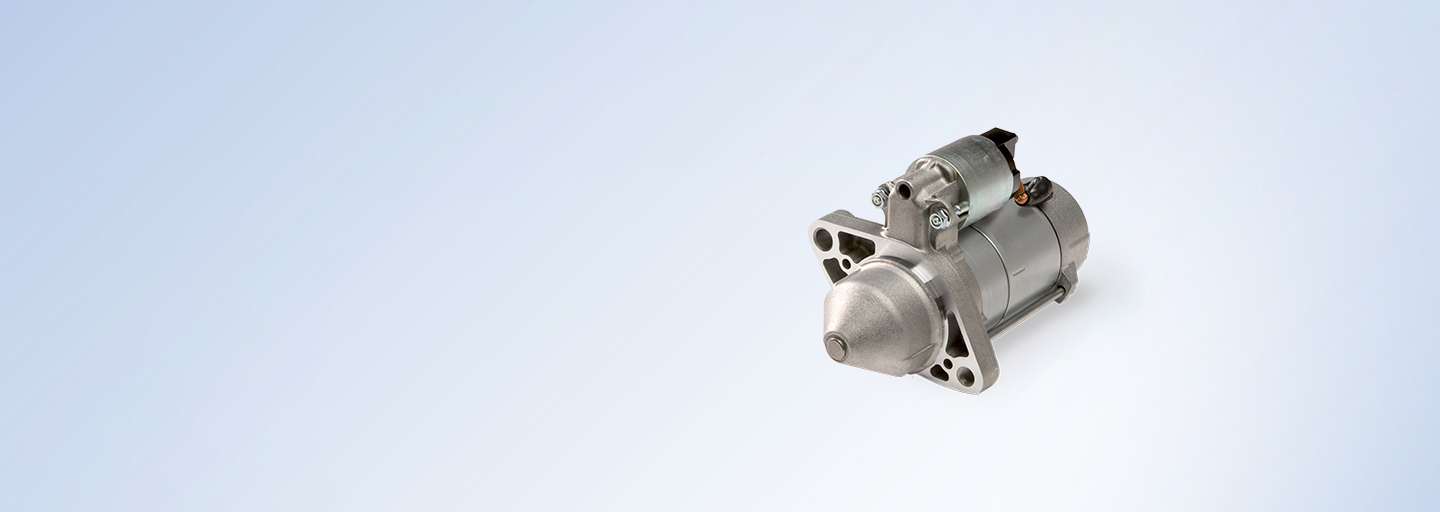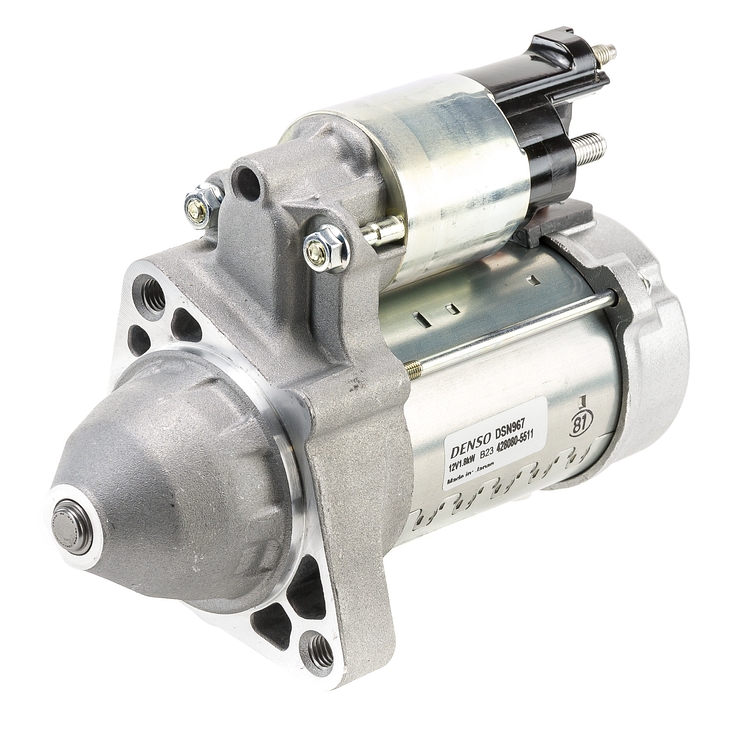H DENSO εργάζεται για την ανάπτυξη εμπορικών εκκινητών αυτοκινήτων από τις αρχές της δεκαετίας του 1960. Αναπτύσσοντας καινοτομίες που έχουν θέσει νέα πρότυπα στην αγορά, οι εκκινητές μας προσφέρουν βέλτιστη απόδοση ισχύος σε μικρότερες, ελαφρύτερες μονάδες, πράγμα που σημαίνει ότι οι κατασκευαστές αυτοκινήτων μπορούν να επωφεληθούν από την ανώτερη απόδοση του κινητήρα χωρίς συμβιβασμούς στην απόδοση του οχήματος.
Για την εκκίνηση ενός κινητήρα απαιτείται εξωτερική δύναμη. Η μίζα λειτουργεί οδηγώντας ένα ενσωματωμένο μοτέρ χρησιμοποιώντας τη μπαταρία του οχήματος. Αυτό δημιουργεί ισχύ και εκκινεί τον κινητήρα παρέχοντας ταχύτητα περιστροφής σε ή πάνω από μια καθορισμένη τιμή. Παρά τη μεγάλη της απόδοση, η μίζα είναι πολύ μικρή καθώς χρειάζεται μόνο για αυτή τη σύντομη και ουσιαστική λειτουργία.

























































